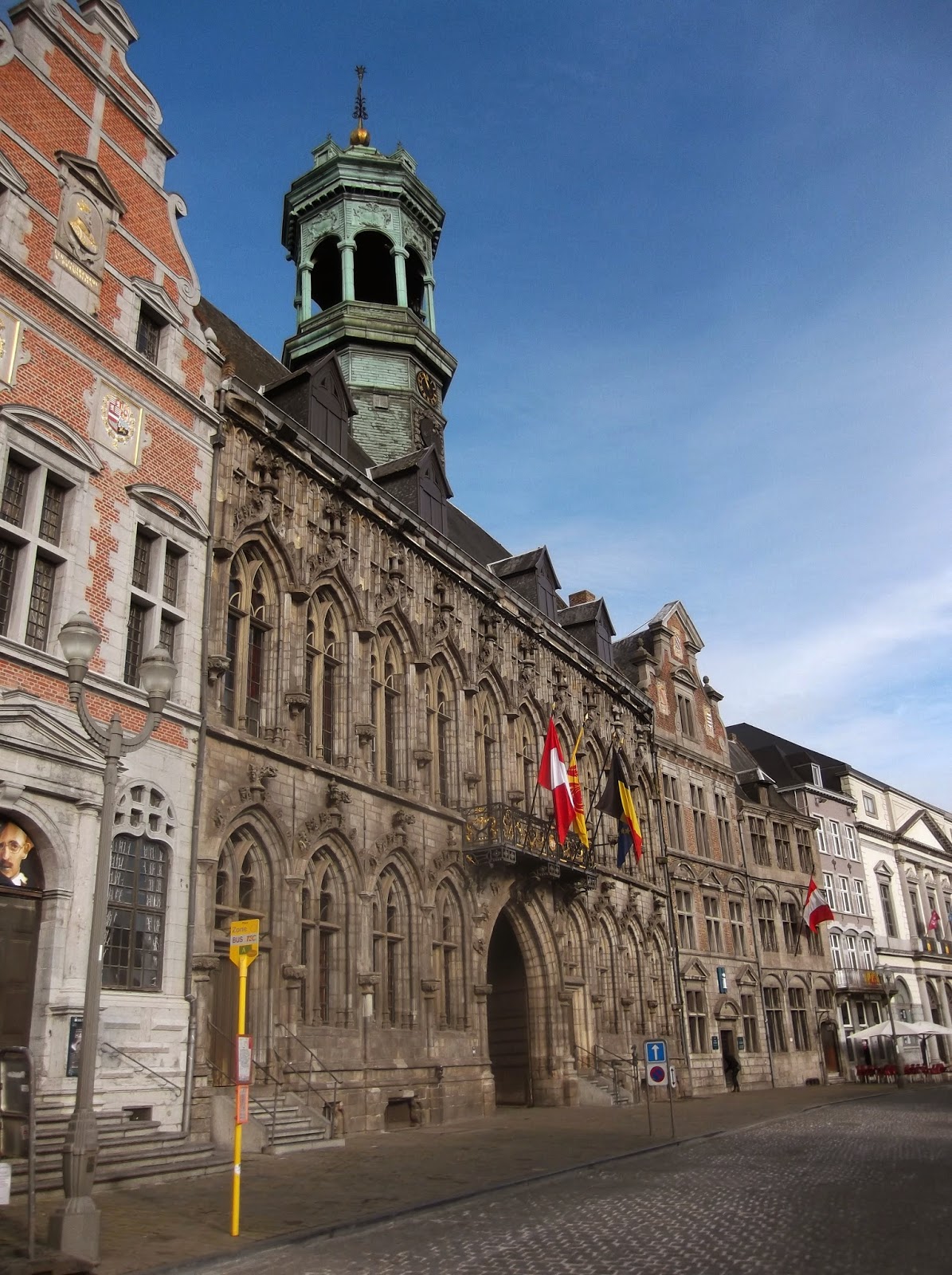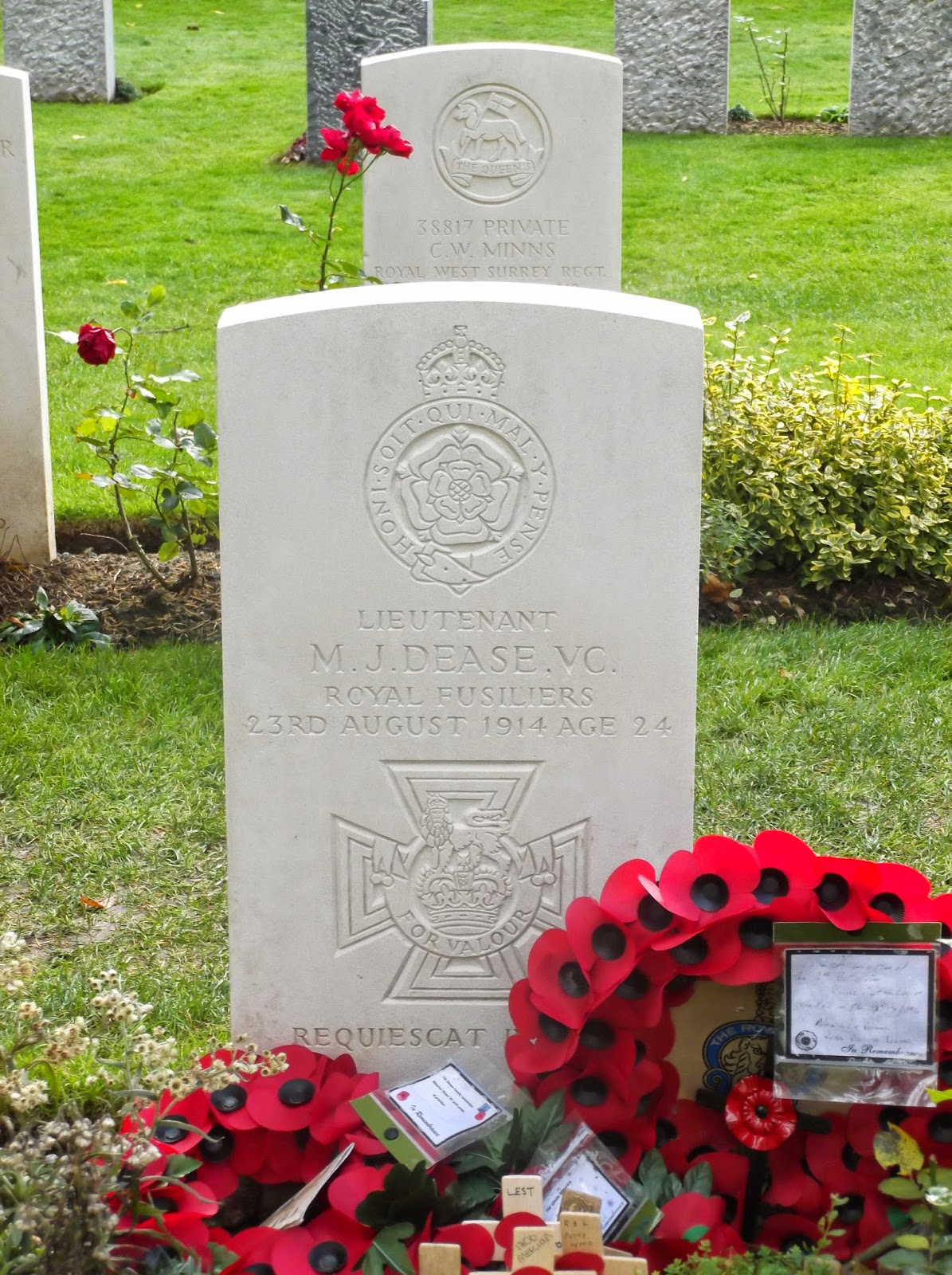Remembrance Sunday Mons Trip
On Remembrance Sunday I was taken over to Mons, a place I have never been before and somewhere I have wanted to go for a long time. Dave was our tour guide as he had been several times before and was able to point out the sights from the First World War. First stop was the town hall, this is the point that part of the British Army had reached on 21st August after landing in France a few days previously.
Just inside the hall was a memorial to that event.
On the outskirts of the town was the memorial to the first clash between C Squadron, 4th Royal Irish Dragoon Guards, who led the first attack on the German vanguard and Corporal Thomas who fired the first shot of the entire BEF in the First World War on 22 August 1914.
Literally on the other side of the road is a memorial to the 116th Canadian Infantry Battalion, who had halted there on 11 November 1918. This is a neat little summing up of the war for the 'futility' school of thought. The idea that the armies didn't move in four years of fighting seems to be born out by these two memorials and is very deceiving for those that know little about the war. These memorials are for two specific events in a very long and complex war, and do not take into account the 500 miles of front line, where other events took place, including a massive and successful Allied offensive beginning in August 1918.
Next on the itinerary was the holding action at the Nimy Bridge where Lt Dease and Pvt Godley held off German attacks on the original rail bridge on 23 August 1914. The action earned them both the VC, Dease posthumously.
Where the VC action took place:
Over at Ourburg station, we saw the memorial to the 4th Battalion, Middlesex Regiment, one of whose soldiers fired the first shots of the Battle of Mons. His name is unknown, but he fired them from the roof of the original station building, which has now gone.
This new bridge replaced the original road bridge that the Germans were attempting to cross when they came under fire from the station.
The memorial now stands where the original station building was, little has changed, expect for a new bridge and a new trunk line running off the main rail line outside Mons.
Later on we visited St Symphorien CWGC cemetery, where some of the men from 1914 were buried.
The cemetery was originally started in 1914 by the Germans under the agreement that British soldiers were to be buried there as well. This fact makes it starkly different to the many other CWGC cemeteries, and indeed, other German cemeteries. The German graves are individuals, a privilege not afforded to those in some of the larger VDK cemeteries, for the sake off space.
Lt Dease VC is buried here.
And in a strange quirk of fate, almost directly behind Dease's grave is the one of Private George Price, the last Canadian to be killed by enemy action before the 11 O'Clock armistice on 11 November 1918.
Also buried here is John Parr, the first British soldier to be killed on the Western Front. Parr was a reconnaissance cyclist who encountered German forward units on the 21 August 1914.
And opposite Parr's grave is the grave of G. Ellison, killed on 11 November 1918, the last British man to be killed in enemy action on the Western Front.
You can see how close the two graves are, Parr's is the one in the foreground, Ellison the background, surrounded by wreaths. I am not sure if this was an absolute coincidence or that the graves had been moved after the war. I suspect the latter.
Mons town cemetery also held many interesting features, such as these graves to French soldiers and Resistance fighters during the Second World War. Many had died after the war and were buried with their comrades.
We found some Russian Expeditionary Force graves, in amongst BEF graves.
And Romanian soldiers fighting on the Western Front.
The cemetery even has the grave of a CWGC worker.
And British and Canadian men who died long after the war had ended, but wanted to be buried with their comrades in arms.
C.H.V. Crichton had reached the rank of Major and won the MC by the age of 22. He died a month of the armistice in December of 1918, possibly of wounds.
Another man, Major H.H. Robinson RMAC had been on active service since 1914, dying in May 1919. Possibly of wounds, or Spanish flu.
On 11 November, Belgium has a national holiday. They also hold a memorial service at the Menin Gate (and other places in the Salient). Entrance to the gate itself is by ticket only, but they erected a large screen in the market square for others to watch. The following photos are of that event, including the Australian memorial at Polygon Wood, Black Watch Corner and aircraft over Tyne Cot Cemetery.
Lest we forget.











































Some excellent images. I'm actually reading Holmes' 'Ride the Retreat' at the moment which details the BEF's retreat from Mons to the Marne. Thank you for sharing.
ReplyDeleteThanks Gaz, it's my pleasure. There are a few good new books on the 1914 campaign, 'Stemming the Tide' edited by Spencer Jones and 'Fire and Movement' by Peter Hart, both of which are excellent books. I thoroughly recommend them!
DeleteThank you for the recommendations, I will add them to my Amazon 'wish list'. Have you read 'Retreat and Rearguard 1914' by Jerry Murland?
DeleteNope, I don't know that one, but I will track it down now. My main interest is in the middle of the war and I know very little about 1914, but Spencer Jones taught me on my MA and Peter Hart is a pal. Both of whose work and ideas I respect, so I'd happily read anything by either!
Delete